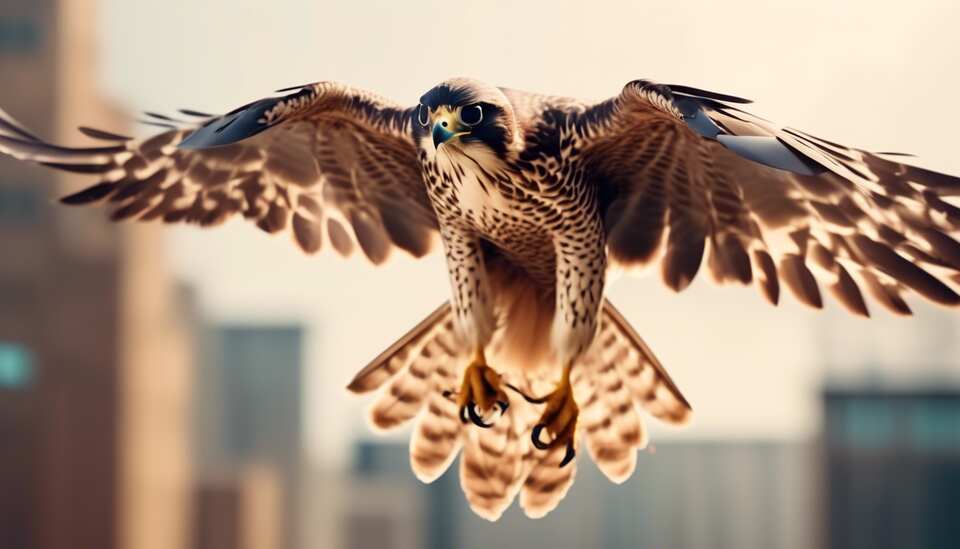The ability of birds to take to the skies has long fascinated and inspired humans. Understanding the mechanics behind avian flight involves delving into various scientific principles that make this phenomenon possible.
Table of Contents
The Science Behind Avian Flight
The Aerodynamics of Bird Flight
Birds have unique anatomical features that are essential for flight. One crucial aspect is their lightweight yet strong skeletal system, which is designed to minimize weight while maintaining structural integrity. Additionally, birds have large pectoral muscles that power their wings through the air. The shape of a bird’s wing is also a key factor in enabling flight. The curved upper surface of the wing, coupled with the flat underside, creates a pressure difference that generates lift as the bird moves through the air.
How Do Birds Generate Lift?
Lift is the force that enables birds to overcome gravity and stay aloft. This upward force is produced as a result of the flow of air over the bird’s wings. When air flows over the curved upper surface of the wing, it has to travel faster than the air beneath the wing, creating a pressure difference. This pressure differential, known as Bernoulli’s principle, results in lift being generated perpendicular to the relative wind.
The Role of Wing Shape and Wingbeat
The shape of a bird’s wing plays a crucial role in determining its flight capabilities. Different bird species have wings with varying shapes and aspect ratios to suit their flying styles. For instance, falcons have long, pointed wings ideal for high-speed diving, while albatrosses have long, slender wings that maximize lift for long-distance gliding. The frequency and amplitude of wingbeats also vary among bird species, with some birds beating their wings rapidly for powered flight, while others opt for a more energy-efficient gliding strategy.
Flight Adaptations in Birds
Birds have evolved various adaptations to enhance their flight efficiency and maneuverability. One such adaptation is the presence of specialized feathers that help streamline their bodies and reduce drag. Birds also make use of air currents, such as thermals and updrafts, to soar effortlessly over long distances with minimal energy expenditure. Migration is another remarkable behavior seen in many bird species, where they undertake long journeys to take advantage of seasonal changes in food availability or breeding grounds.
The science behind avian flight is a testament to the marvels of nature’s engineering. From the aerodynamic principles that govern lift generation to the diverse adaptations seen in different bird species, the ability of birds to fly serves as a remarkable example of evolution at work. By unraveling the mysteries of bird flight, scientists gain insights not only into avian biology but also into potential applications for human aviation technology. As we continue to study and appreciate the wonders of avian flight, we deepen our understanding of the natural world and our place within it.

Factors Influencing the Flight Patterns of Birds
Birds are fascinating creatures that have intrigued humans for centuries with their ability to soar through the skies effortlessly. Understanding the factors that influence the flight patterns of birds can provide valuable insights into their behavior and physiology.
External Anatomy and Wing Structure
The external anatomy and wing structure of birds play a crucial role in their flight capabilities. Birds have lightweight skeletons, which reduce their overall body mass, making it easier for them to stay airborne. The shape of a bird’s wings is also essential for flight. Different bird species have wings adapted for specific types of flight, such as soaring, hovering, or high-speed maneuvers. Additionally, the arrangement of feathers on the wings helps birds generate lift and maneuver through the air with precision.
Muscle Strength and Endurance
Muscle strength and endurance are vital factors that influence how birds fly. Flight requires a significant amount of energy, especially for long-distance migratory birds. Birds have powerful breast muscles responsible for flapping their wings and generating the thrust needed for flight. The pectoral muscles of birds make up a large portion of their body mass, enabling them to sustain flight for extended periods without getting fatigued easily.
Aerodynamics and Air Pressure
Aerodynamics plays a crucial role in determining how birds fly. Birds are designed to reduce drag and increase lift during flight. The shape of a bird’s body and wings are streamlined to minimize air resistance, allowing them to move efficiently through the air. Additionally, birds can adjust the positioning of their wings and tail feathers to control their speed and direction mid-flight. By manipulating air pressure using their wings and body, birds can achieve different flight patterns with ease.
Environmental factors such as wind patterns, air temperature, and altitude can influence how birds fly. Birds often use rising air currents, known as thermals, to gain altitude without expending too much energy. By understanding weather patterns and utilizing air currents effectively, birds can conserve energy during long flights. Furthermore, birds have an excellent sense of direction and navigation abilities, allowing them to migrate thousands of miles with remarkable precision.
Instinctual Behaviors and Adaptations
Instinctual behaviors and adaptations also play a crucial role in determining how birds fly. Bird species have evolved unique adaptations that suit their specific flight requirements. For example, seabirds have long, narrow wings ideal for long-distance gliding over the ocean, while hummingbirds have rapid wingbeats that enable them to hover effortlessly. These instinctual behaviors and adaptations have been honed through evolution to maximize the efficiency of avian flight.
The flight patterns of birds are influenced by a complex interplay of external anatomy, muscle strength, aerodynamics, environmental factors, and instinctual behaviors. By studying these factors, researchers can gain a deeper understanding of how birds navigate the skies with such grace and agility.
Conclusion
In understanding how birds take to the skies and navigate the vast expanses of our world, we uncover the intricate science behind avian flight. From their unique wing structures to the complex air currents they harness, birds have evolved remarkable adaptations that enable them to achieve flight in ways that continue to captivate scientists and enthusiasts alike. The factors influencing the flight patterns of birds are both diverse and fascinating, encompassing a delicate interplay of biological, environmental, and behavioral elements.
By delving into these aspects, we gain a deeper appreciation for the complexity of avian flight and the remarkable capabilities of our feathered friends. Ultimately, the marvel of birds in flight serves as a testament to the wonders of nature and the endless possibilities of the natural world.



